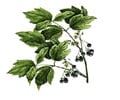Italian archaeologists have shed new light on how doctors practised in Roman times by discovering an ancient doctor's surgery.
Italian archaeologists have shed new light on how doctors practised in Roman times by discovering an ancient doctor's surgery.
The medical implements found show that doctors, their surgeries and the ailments they treated have not changed much in 1,800 years.The discovery revealed that sore joints were widespread, patients were frequently told to change their diets, and the good doctor of the coastal town of Rimini even performed house calls.
For the past 17 years, archaeologists have carefully excavated the Domus del Chirurgo - House of the Surgeon, and assembled the world’s most thorough representation of medical treatment in Roman times.
Their discoveries will go on public display for the first time on Dec 11.
"This is the largest find of surgical instruments anywhere," the Telegraph quoted Dr Ralph Jackson, the curator of the Romano-British collection at the British Museum and an expert in ancient medicine, as saying.
Among the 150 different implements is an exceptional iron tool used to remove arrowheads from wounds, which indicates the doctor’s experience as a military surgeon.
Advertisement
"It tells us a great deal of how he worked and the range of procedures he undertook because of its completeness. All previous finds have been only partial," Dr Jackson said.
Advertisement
"Joint problems were the single most common complaint in Roman times, and they were probably treated with heat and cold," said Dr Jackson.
He said that the finding suggests that the doctor used diet as a first approach to treating a disease, then drugs prepared from plants in a pestle and mortar, and finally surgery.
"One of the most exciting finds was a lenticular, a small chisel used for opening the skull safely after gouging a channel into it with another instrument," he said.
"Healers of 1,800 years ago knew in the case of a fracture it was important to get out the bits of bone. It's also obvious, from the bundles of instruments kept ready for rushing to the other side of Rimini at a moment's notice, that he also went out to perform emergency surgery. I am still analysing tiny blades kept to treat everything from an eye to a thigh wound,” he added.
The rooms where doctors examined patients were similar to those in a modern surgery, inclusive of a table and a high-backed leather chair for the doctor, and an operating room with a bed along one wall.
The excavation, funded by the Italian government, has so far cost more than 750,000 pounds.
Source-ANI
LIN/P






